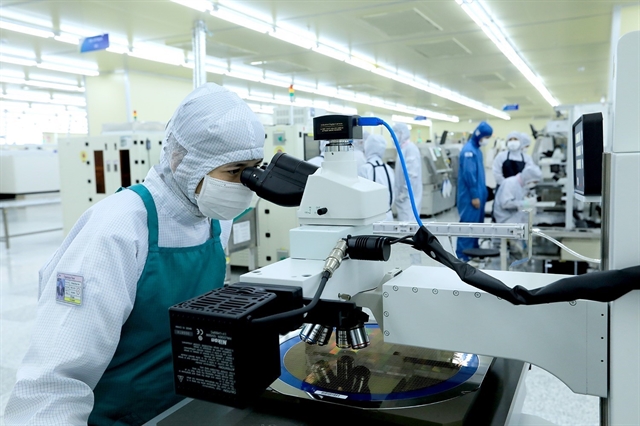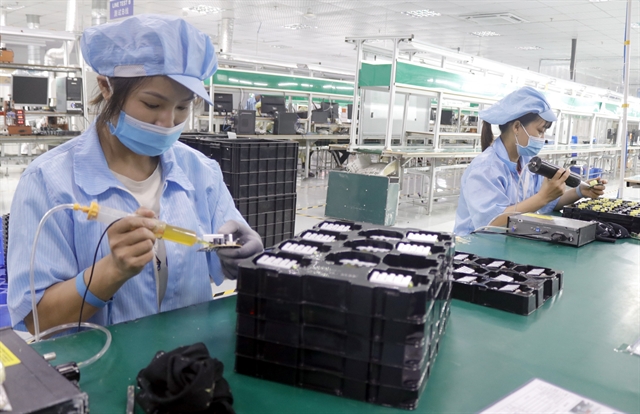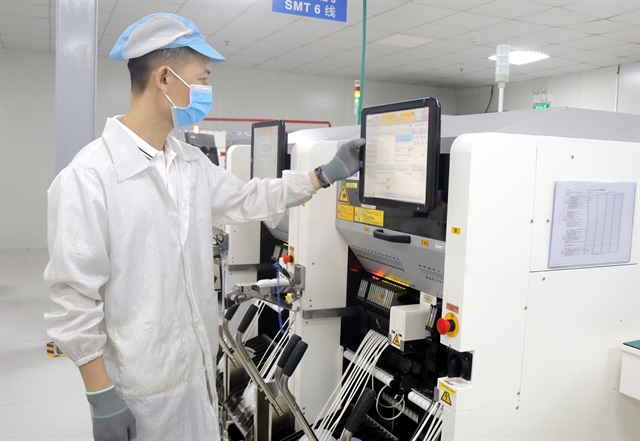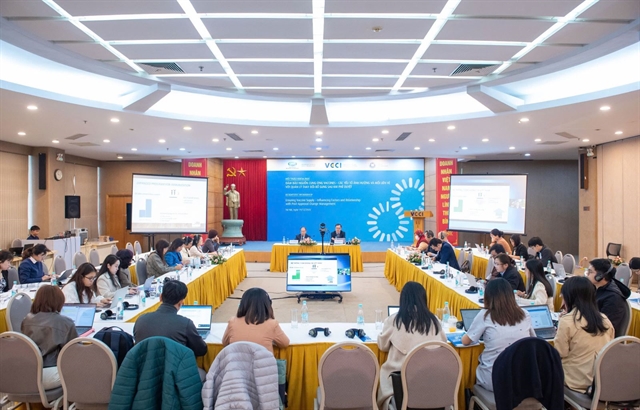 Economy
Economy

 |
| The semiconductor industry in Bắc Giang is expected to need around 6,300 workers between 2025 and 2030. — VNA/VNS Photo |
BẮC GIANG — Bắc Giang Province is preparing for significant growth in the semiconductor industry, with an estimated demand for around 6,300 workers in the 2025-2030 period.
The Bắc Giang Industrial Zones Authority estimates that the sector will require 1,200 workers with college-level education or higher, along with 5,100 workers for general roles. This demand is driven by the rapid growth of the semiconductor industry, which is attracting significant investment both now and in the coming years.
Currently three companies in Bắc Giang are involved in semiconductor production, including South Korea-invested Hana Micron Vina and Si Flex Việt Nam and Synergie Cad Việt Nam with French investment. These companies currently employ over 8,000 workers, including 175 foreign experts and more than 700 university graduates.
Despite its strong growth potential, the semiconductor industry in Bắc Giang faces a significant shortage of skilled technical workers.
According to the Deputy Head of the Bắc Giang Industrial Zones Authority, Nguyễn Xuân Ngọc, semiconductor production is a new sector in the region, and therefore, the availability of workers specifically trained in semiconductor technology is limited.
As a result, companies often have to train Vietnamese workers from scratch, even for technical and production roles. After undergoing training, which can take from one to three months, employees can perform tasks, but still require supervision from managers and technical experts. It takes up to six months to a year for workers to become fully independent and proficient.
Human Resources Manager at Hana Micron Vina, Nguyễn Mạnh Chiến, said that the shortage of qualified semiconductor workers is one of the most significant challenges for the company.
 |
| Companies must train Vietnamese workers from scratch, even for technical roles. — VNA/VNS Photo |
The company uses advanced, automated production lines, so the need for skilled staff is high. While basic tasks are covered by a stable workforce, the company urgently requires workers with expertise in semiconductor technologies.
"Hiring skilled labour is critical for the semiconductor industry," Chiến said. "Currently, the province has implemented policies to attract workers from other regions to work in Bắc Giang's industrial zones. These policies are practical and essential for businesses."
To meet the growing demand for skilled labour, Hana Micron Vina has teamed up with Việt Hàn College of Technology to offer courses on semiconductor technology. The first batch of 90 students has been trained, with more courses planned. These sessions are taught by expert engineers and production managers.
The company is also collaborating with the Industrial Technical College to set up another training programme focused on semiconductor technology.
For its part, the Bắc Giang Department of Labour, Invalids and Social Affairs plans to train 3,000 teachers and students in semiconductor and related fields like artificial intelligence (AI), both locally and abroad. By 2030, the goal is to train 3,500 workers with college degrees and over 5,000 with vocational training.
Additionally, the province will provide ongoing training for around 8,500 workers in semiconductor, IT and AI sectors. The department is working with other agencies to propose policies to attract and support the training of skilled workers in these industries.
Acting Chairman of the Bắc Giang Provincial People’s Committee,Mai Sơn, emphasised that the province is witnessing rapid growth in the semiconductor industry, which is crucial to the global economy, especially in the digital era.
With the global semiconductor market projected to reach US$1 trillion by 2030, Bắc Giang is well-positioned to benefit from this surge in demand. However, to fully capitalise on this opportunity, the province must focus on developing a skilled, high-quality workforce that meets the technological demands of the sector.
Recognising the critical importance of the semiconductor industry, Bắc Giang has taken steps to ensure it can meet the needs of investors and businesses in the sector. The local government continues to create favourable conditions to attract and support new investments, ensuring that the region is ready for the next wave of technological advancements and growth in this key industry, Sơn said. — VNS




